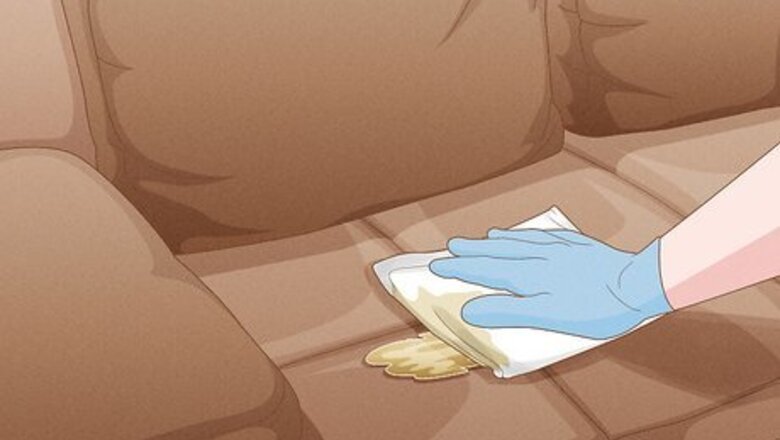
views
White Vinegar
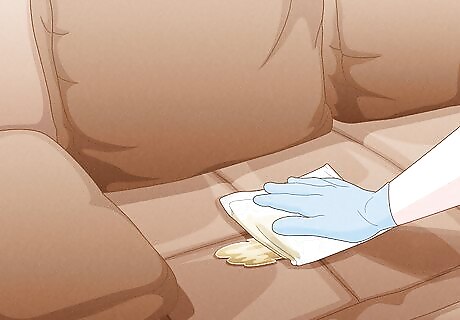
Blot up any leftover urine with paper towels if the stain is fresh. Toss out the used paper towels and continue soaking up the mess with fresh sheets. Continue blotting until you’ve soaked up as much pee as possible.
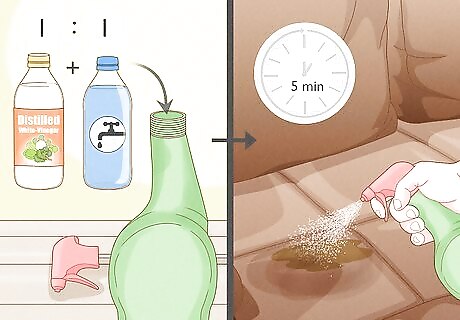
Spritz a water-white vinegar mixture over the stain and wait 5 minutes. Mix 1 part distilled white vinegar and 1 part tap water in a spray bottle. Spray the mixture on top until the stain is completely covered. Then, set a timer for about 5 minutes so the vinegar has enough time to soak into the stain.
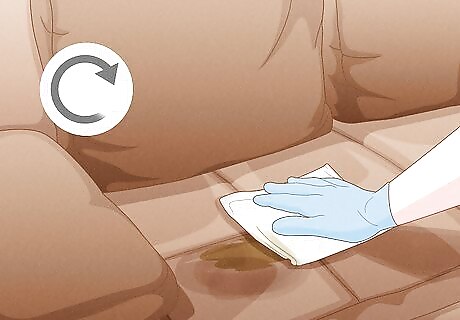
Dry off your couch with a paper towel. Blot up the water and vinegar from the surface of the leather until it’s completely dry. You may need to use more than one paper towel for this.
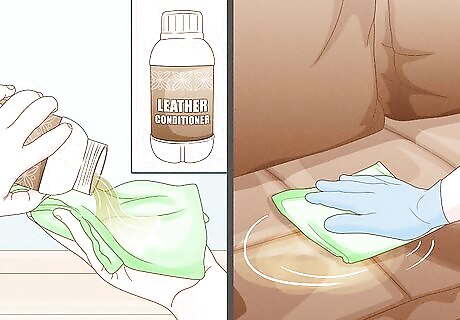
Apply leather conditioner to keep the material hydrated ans supple. Pour a small portion of commercial leather conditioner onto a soft, lint-free rag. Then, buff the product into your sofa, focusing especially on the spot you stain-treated. Let the couch air-dry completely before sitting in it again.
Enzymatic Cleaner
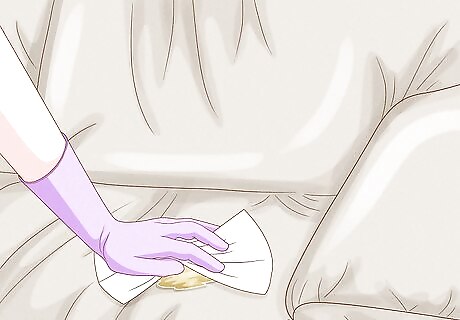
Soak up any fresh urine with a paper towel. Blot up as much pee as you can with the paper towel before throwing it away and grabbing a clean one. Keep blotting until you’ve soaked up most of the urine–this will make the rest of the cleaning process a lot easier. Make sure that you don’t rub the stain into the sofa. This can force the urine deeper into the leather, and will only make the cleaning process more difficult. It might help to open up a window or switch on a fan to help ventilate the area while you clean.
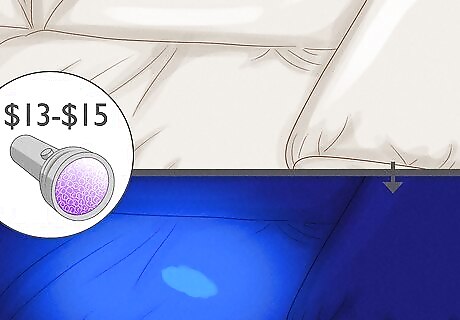
Locate dried urine stains with a blacklight. Dried cat pee isn’t always noticeable to the naked eye, but it does glow under a blacklight. Switch off the lights in the room with your leather couch and shine the blacklight over your couch to see what you find. You can buy a blacklight online or at a home improvement store. They’re typically priced between $15 and $30.
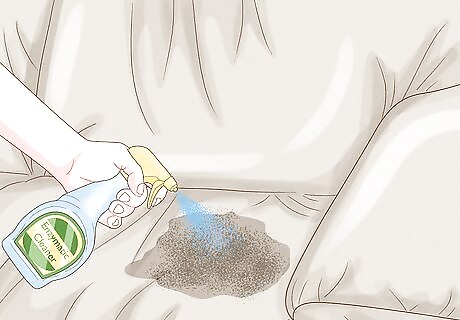
Spritz over the stain with an enzymatic cleaner. Enzymatic cleaners are formulated to get rid of the acid in pet urine stains, along with the terrible smell. Start spraying the cleaner all over the stain until the surface is totally drenched. Make sure that your enzymatic cleaner is safe to use on leather before you start spraying. You can buy enzymatic cleaner online or at a pet supply shop.

Blot up the stain with a clean paper towel. Soak up the leftover cleaner, along with the urine in the surface of your leather. Use as many paper towels as it takes to soak up the rest of the cleaner.
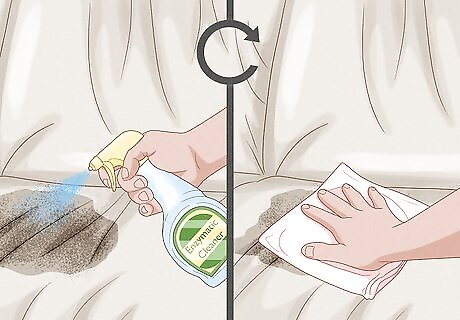
Continue spritzing and blotting until the urine stain is gone. Grab your blacklight and shine it over the surface stain. If there are still traces of urine on the leather, go over it again with the enzymatic cleaner and paper towel. If nothing lights up, you’re good to go!

Dry off the leather with a clean cloth. Pat down the area that you just cleaned to soak up excess moisture. Then, let your couch air-dry overnight before sitting on it.
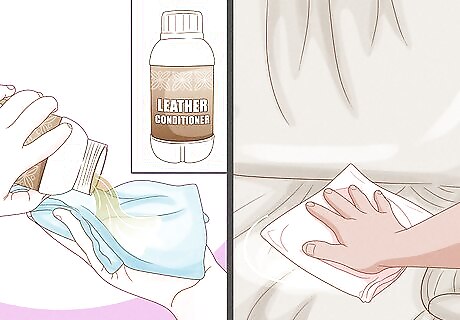
Rehydrate the leather with a special leather conditioner. Squeeze a small dollop of commercial leather conditioner onto a clean, lint-free rag. Massage the product all over your leather sofa, including the area you just treated. Then, wait for the leather to completely dry off before using your couch again.
Stain Prevention
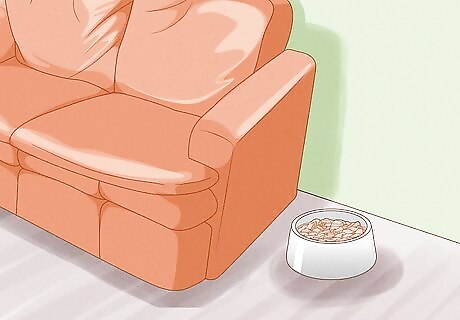
Set some kitty food near your leather couch. Cats are pretty sanitary animals, so they aren't fans of eating in the same place that they go to the bathroom. Using this logic, set out a bowl of cat food so it’s right next to your leather sofa–with any luck, your cat will get the hint and leave the furniture alone.

Clean your cat’s litter box if it’s dirty. Like humans, cats don’t like going to the bathroom in a dirty space. Inspect and replace the litter box once every few days, and dispose of any poop as soon as you notice it. If you have multiple cats at home, make sure that each kitty has their own designated litter box, too. Some cats aren’t fans of certain litter scents and textures. Try switching out your cat’s litter with a fine, sand-like, and unscented variety.
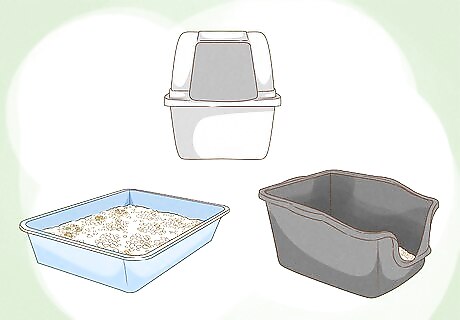
Try a different style of litter box. Your cat’s litter box preferences really depend on their age and size. Big kitties obviously need roomier litter boxes that they can move around in, while kittens and senior cats like open litter boxes with low walls. It may take a bit of trial and error before you figure out your cat’s preferences, so don’t give up! Cats generally dislike covered litter boxes, since they tend to trap odors in one place.
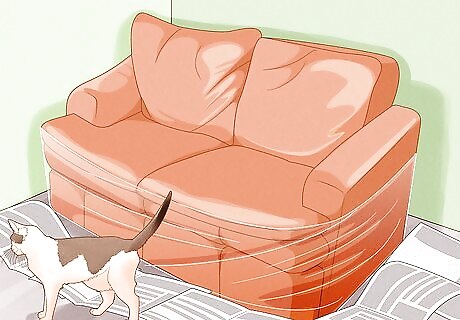
Cover the nearby floor with newspaper, sandpaper, or something similar. Cats don’t like walking on certain materials, and will avoid areas that have them. With this in mind, place a few sheets of newspaper or cling wrap around your leather couch to deter your cat.



















Comments
0 comment